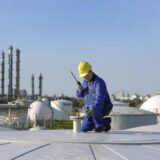U.S. specialty chemicals market enters third quarter on a positive note, lubricant additives rise 2.3% in July
The U.S. Specialty Chemicals Market Volume Index, a tool created by the American Chemistry Council (ACC), entered the third quarter of 2016 on a positive note, rising 0.2% in July. This follows a 0.3% decline in June and a 0.2% decline in May and marks the first gain since March 2016.
All data is measured on a three-month moving average (3MMA) basis. Of the 28 specialty chemical segments monitored by the ACC, 17 expanded in July, two were stable and the remaining nine markets experienced decline.
Specialty chemicals are materials manufactured on the basis of the unique performance or function and provide a wide variety of effects on which many other sectors and end-use products rely. These specialty chemical segments provide a detailed view of trends in manufacturing. The data also sheds light on how various consumer end-use markets are performing compared to others in the marketplace.
The overall specialty chemicals market volume index was off 0.9% year-on-year on a 3MMA basis. The index stood at 102.6% of its average 2012 levels. This is equivalent to 7.07 billion pounds, off from 7.14 billion pounds last July. During 2014, year-on-year comparisons were generally in the 4.0% to 6.8% range but since February 2015, they have fallen well below that range as the downturn in the oil and gas sector affected headline volumes.
Weakness has spread to other segments as well and year-earlier comparisons have been negative since the second quarter of 2015. Still, on a year-on-year basis, there were gains among market and functional specialty chemical segments.
The lubricant additives segment rose 2.3% in July compared to the same period a year ago. On a year-on-year basis, the lubricant additives volume index rose 0.6%. Not unexpectedly, oilfield chemicals declined by 16.1% in July compared to the same period a year ago and declined 18.7% year-on-year.
Antioxidants rose 0.2% in July 2016 compared to July 2015 and rose 1% year-on-year, while biocides rose 2.7% in July 2016 compared to July 2015 and rose 2.6% year-on-year. Meanwhile corrosion inhibitors declined by 1.3% in July 2016 compared to July 2015 and declined 2.2% year-on-year.
.jpg)







